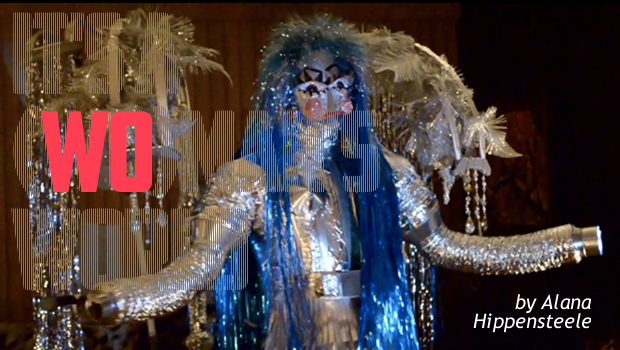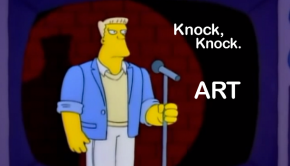In This Garage, It’s a ‘(Wo)man’s’ World
Humanity has been fascinated by the differences in the female and male forms since the cave paintings. Yet, throughout most of history, it has been men that have done the gender exploration in art—women, while looked to as muses and inspiration, were rarely seen as being capable of creating anything themselves.
It is something that, unfortunately, still remains prevalent in the art world today to some extent. Here in Hawaii, the artist Susan Callahan Kang has decided to do something about that by opening up her house in Aina Haina to show a group exhibition, called It’s A (Wo)man’s World, which closes with a performance by Robert Reed on March 2.
Kang is holding it in her garage and throughout her home, explaining that “‘The Garage’ was a long time coming. As a practicing artist who went back to art school later in life, I dreamed of having an alternative space where artists could exhibit and talk about concepts, someplace free from the constraint of commerciality.”
She asked Robert Reed to co-curate (Wo)man’s World, the artist of such works as Unnecessary Seduction at Honolulu Museum of Art’s Spalding House in 2012, and writer/director of the play, My Titties Are Jetlagged.
“Robert was the first, natural and, ultimately, only choice for the curator of It’s A (Wo)man’s World,” Kang says. “He took this theme and ran with it.”
According to Reed, Kang asked him to be an honorary curator for the show, but he was initially hesitant until learning that the artists had already been chosen and the show had already been put together, that Reed would be able to simply contribute in whatever way he deemed fit. So he decided his contribution would be through his own performance art, which he performed at the show’s opening reception on Jan. 31 and will again at its “closing brunch” on March 2 at 2:30pm.
Reed describes his performance as “Cyborg Cher with a Cher-mobile, like the iconic Popemobile but built like a stage of bent crutches and walkers.”
“As I researched Cher, it really correlated with the theme of the show. I saw her change from a dependent wife and sex symbol to an independent single mother with a strong voice for women’s rights and female autonomy,” he says.
Reed says he sees women tend to define themselves by what they wear in many ways that men often don’t, or possibly don’t need to. “Women are more defined by their clothes than men are. There’s an inherent closet feel to it, like the feeling of a gay man being in the closet.”
For this reason, Reed based an aspect of his performance around the imagery of being in and coming out of a closet. Various Barbie and other dolls hang in a closet from a crutch in the garage in gruesome or distressed positions; some are heavily made up so much that they seem maniacal. He says this comes from his interpretation of women being in the closet and being stuck without a voice, especially during the 1950s and ‘60s and that this is similar to his experience growing up in the Midwest during the 1960s. “It had to do with being a gay child. The closet felt like it would just suck me into it.”
Although It’s A (Wo)man’s World may have a male curator, the show is of mostly female artists.
Kang says she wanted to include both genders so as to explore female issues from both perspectives, whether it be relationship or abortion issues, or gender identity.
Printmaker and photographer Jeremy Pang, a male in the show, says that the more challenging a show’s theme is, the better he likes his work. “Whenever there is a theme that I have to go by, I initially get frustrated coming up with ideas. But when it comes down to it, the harder the idea is to manage for me, the better my work becomes. I find that, as an artist, putting yourself in uncomfortable situations creates the best art.”
The show’s theme attracted textile artist Eva Enriquez to the show, because “gender identity, for an artist, is a major issue, especially when you are a female artist because you become able to use your work to voice gender inequalities and injustices,” she says. “It is not a popular issue, but for me it is important to raise questions and concerns as both an artist and a woman.”
Questioning gender identity in Hawaii is greatly needed, and although this show will only have been up for a month, we should remember the conversations had due to exhibitions such as this.








